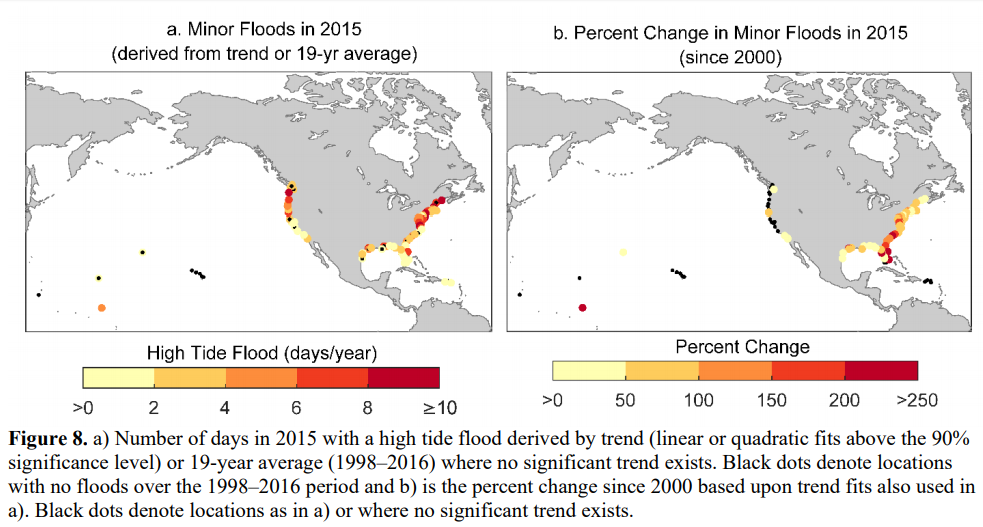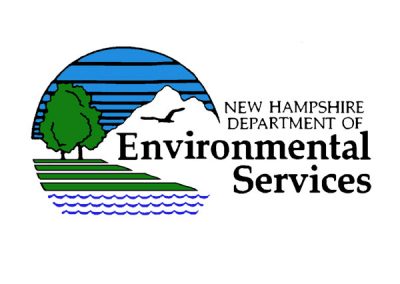By: Nathalie Morison, Coastal Resilience Specialist, NHDES Coastal Program, nathalie.morison@des.nh.gov
Hampton, NH – From cracked foundations, totaled cars, and destroyed utility systems, recurrent coastal flooding has already inflicted considerable damage in Hampton Beach (and elsewhere along New Hampshire’s seacoast) and has residents searching for ways to protect and continue enjoying their properties for years to come. The question for many, especially those with homes near the back barrier marsh, has become not whether, but how to prevent future flood damages. In an attempt to heed this call, CAW partners – the Seabrook-Hamptons Estuary Alliance (SHEA) and the NHDES Coastal Program – hosted the first-in-NH Building a Flood Smart Seacoast workshop series this summer, focused on helping property owners make better-informed decisions about how to make their property more flood resilient.
The three workshops, held in June, July, and August 2018 featured presentations by local experts on a wide range of topics including trends in high tide flooding, the protective role sand dunes and salt marshes play, flood insurance, and various strategies to “keep water out,” “live with water,” and “get out of the water’s way.”
Per usual, the lessons learned were many and nearly impossible to fit into a nicely packaged blog post, so here are my top five (ok, six) takeaways:
1. High tide flooding is happening now and is expected to occur more frequently in the future.
According to a report released by the National Oceanic and Atmospheric Administration (NOAA) in February 2018, the frequency of high tide flooding has accelerated over the last decade or so and is expected to continue rapidly increasing in response to sea-level rise. Along the Northeast Atlantic where we live, for example, the annual frequency of high tide flooding increased on average by 75% (from 3.4 days to 6.0 days/year) between 2000 and 2015. Looking ahead, high tide flooding is expected to occur on average between 45 and 130 days/year by 2050, and at least “every other day,” if not more, by 2100 depending on how much sea-level rises.

All that is to say, the high tide flooding challenges New Hampshire residents are already experiencing are not only here to stay, they’re likely going to get worse unless property owners and communities take individual and collective action(s) to mitigate future flood damages.
2. Salt marshes and sand dunes are both stunning and smart.
Every time I hear Alyson Eberhardt (NH Sea Grant Extension) or Dr. Dave Burdick (UNH Jackson Estuarine Lab) talk about salt marshes and sand dunes, I fall in love with these important coastal land forms all over again. Not only are they stunningly beautiful to look at, they also provide important coastal storm and flood protection, among many other co-benefits. Unlike “built” or “hard” shoreline protection structures (e.g., seawalls, bulkheads, levees, etc.), these natural systems – under the right circumstances – can grow stronger with time and have the potential to self-recover after a storm or flood event. Unfortunately, when sand dunes and salt marshes become degraded, they lose the ability to perform these services, so protecting and enhancing these habitats are two of the most important things we can do to mitigate future storm and flood damage.
3. Everyone lives in a flood zone.
Jennifer Gilbert, New Hampshire’s State National Flood Insurance Program (NFIP) coordinator, reminded us of this one simple truth: anywhere it can rain, it can flood. The Federal Emergency Management Agency’s (FEMA) Flood Insurance Rate Maps (FIRMs) show areas of “high,” “moderate,” and “low” flood risk. While flood insurance is only required for properties in “high” risk areas (Special Flood Hazard Area) that have a federally backed mortgage or have received prior disaster assistance, flooding can also occur in “moderate” to “low” risk areas. In fact, policyholders outside of mapped high-risk areas file over 20% of all NFIP flood insurance claims and receive 1/3 of federal disaster assistance for flooding.

In other words, it’s important to remember that “moderate” to “low” risk doesn’t mean “no” risk. For this reason, property owners should consider buying flood insurance even when it is not required. A Preferred Risk Policy provides both building and contents coverage for eligible properties in “moderate” to “low” risk areas for one low price.
4. Flood insurance rates are going up, but there are ways to save.
The bad news: Effective April 1, 2018, flood insurance premiums are slated to rise an average of 8% from an estimated average of $866 to $935 per policy (not including various surcharges) in order to comply with recent flood insurance reform laws, including the Biggert Waters Flood Insurance Reform Act of 2012 and the Homeowner Flood Insurance Affordability Act of 2014. The good news: there are a few ways to lower your flood insurance premium. For example, elevating your home just one foot above the base flood elevation often results in a 30% reduction in annual premiums. Additionally, if you’re thinking of selling or buying a home in a “high” risk area, remember that flood insurance coverage can be transferred from one homeowner to the next. In some cases, retaining the existing flood insurance policy can mean lower premium rates for the new policy holder.
Hampton homeowner, Tara Delle Chaille, explained her recent decision to elevate her home after it sustained substantial damage this past January and how she was able to take advantage of Increased Cost of Compliance (ICC) coverage to assist with construction costs. If you are a homeowner who lives in a Special Flood Hazard Area, has an NFIP policy, and your home was substantially damaged, you too may be eligible for ICC coverage up to $30,000 to help cover the cost of mitigation activities that will reduce the risk of future flood damage to the building.
5. “Nae man can tether time nor tide…” and it turns out, neither can rain gardens.
Don’t worry, I didn’t get Dr. Tom Ballestero’s (UNH Stormwater Center) proverbial reference to King Canute and his vain attempt to hold back the tide either, but it’s really helped me remember this often misunderstood fact about stormwater management. While stormwater management strategies (e.g., bioswales, rain gardens, permeable pavements, etc.) can help capture and treat rain and snow runoff from a site, they cannot control the tide and won’t function properly when submerged. Furthermore, unusually high tides and already high groundwater can cause underdrains to back up, preventing infiltration of stormwater runoff and thereby exacerbating flooding impacts from heavy rainfall events, extreme high tides, and sea-level rise. So, while it might be a good idea to reduce the amount of impervious surface on your property to help attenuate runoff during a heavy rain, just remember the story of King Canute and don’t expect that alone to tether the tide.

6. There is no one size fits all solution to coastal flooding.
Last, but not least: if there’s one takeaway that sticks with you, I hope it’s this one. As Kirsten Howard (NHDES Coastal Program) emphasized at the August workshop, the strategy (or strategies) a homeowner chooses to pursue will largely depend on the type of coastal flooding they’re experiencing and the geography of their property, as well as their willingness and ability to tolerate risk. For example, building dunes in front of your home is only going to be appropriate if you have beach front property, while other living shoreline techniques (e.g., coastal bank stabilization using coir logs, salt marsh creation with coir log/shellfish edge protection) will work best when there is sufficient distance and elevation between the encroaching tide and the asset you want to protect. For this reason, it’s important to get a better understanding of YOUR risk before you decide what strategies will work for you. If you don’t, you might end up spending a lot of money on a “solution” that doesn’t fix your issue.
So…What’s Next?
If you’ve attended the workshop series and you’re still not sure how to assess your risk and what options might be suitable for addressing coastal flooding on your property, workshop organizers are in the process of planning two follow-up opportunities for you to learn more:
- SHEA will be holding monthly or bimonthly Flood Smart Seacoast roundtable sessions to further discuss local property owners’ specific flooding issues of interest in greater detail. If you’re interested in participating in these discussions, please send an e-mail to info@shea4nh.org.
- Alyson Eberhardt (NH Sea Grant Extension) and Kirsten Howard (NHDES Coastal Program) have offered to conduct site visits of properties to help homeowners determine the best course of action. If you’re interested in signing up for a possible site-visit, please send an e-mail to kirsten.howard@des.nh.gov. Note: Kirsten and Alyson will be in touch in the next couple of months to get some more information about your property and to schedule a site visit for late fall/early spring if appropriate.
The Building a Flood Smart Seacoast Summer 2018 Workshop Series was brought to you by the Seabrook-Hamptons Estuary Alliance & NHDES Coastal Program.



